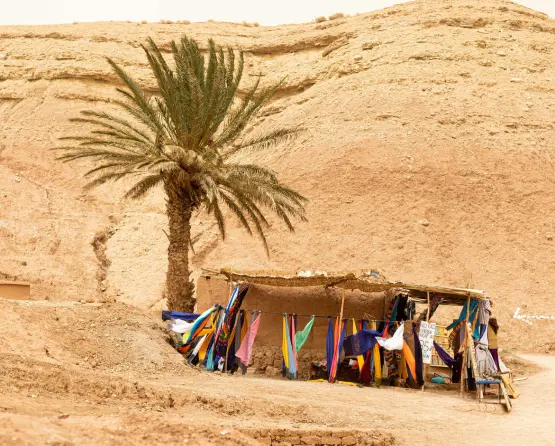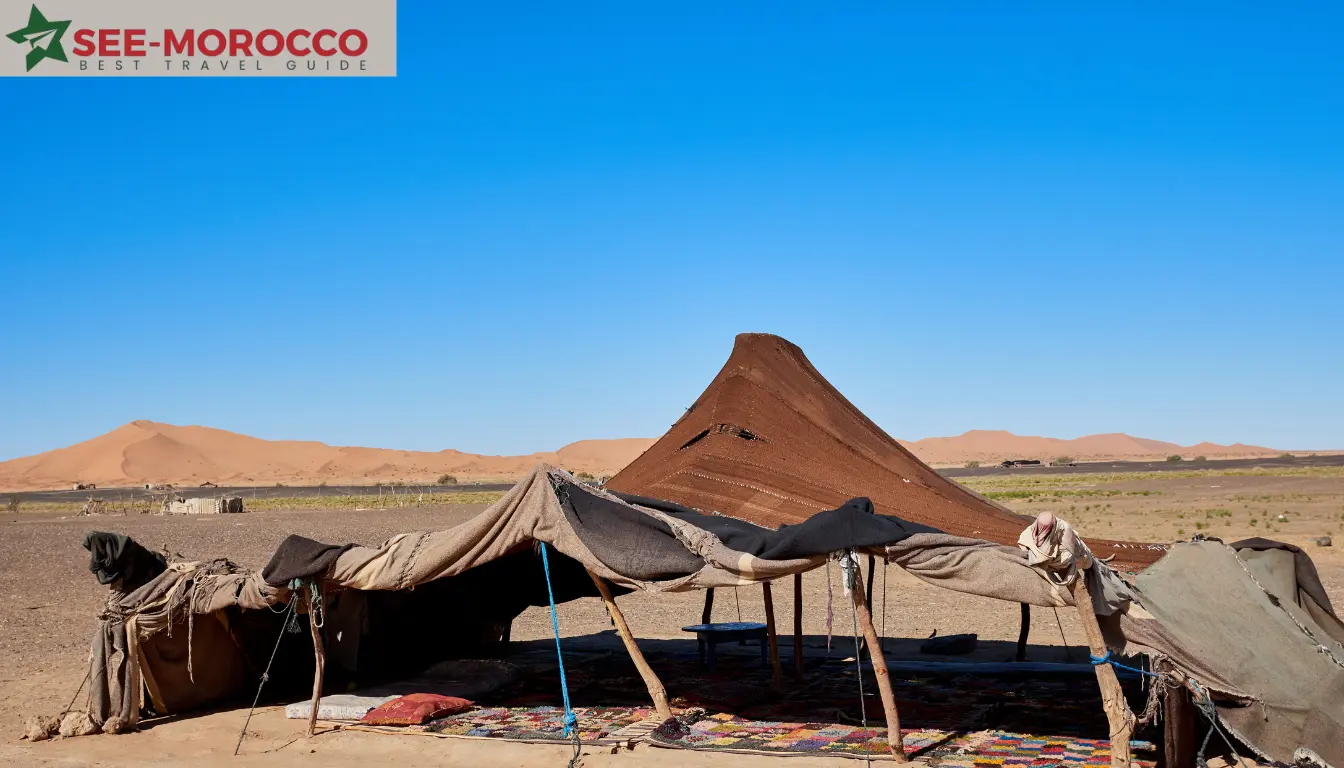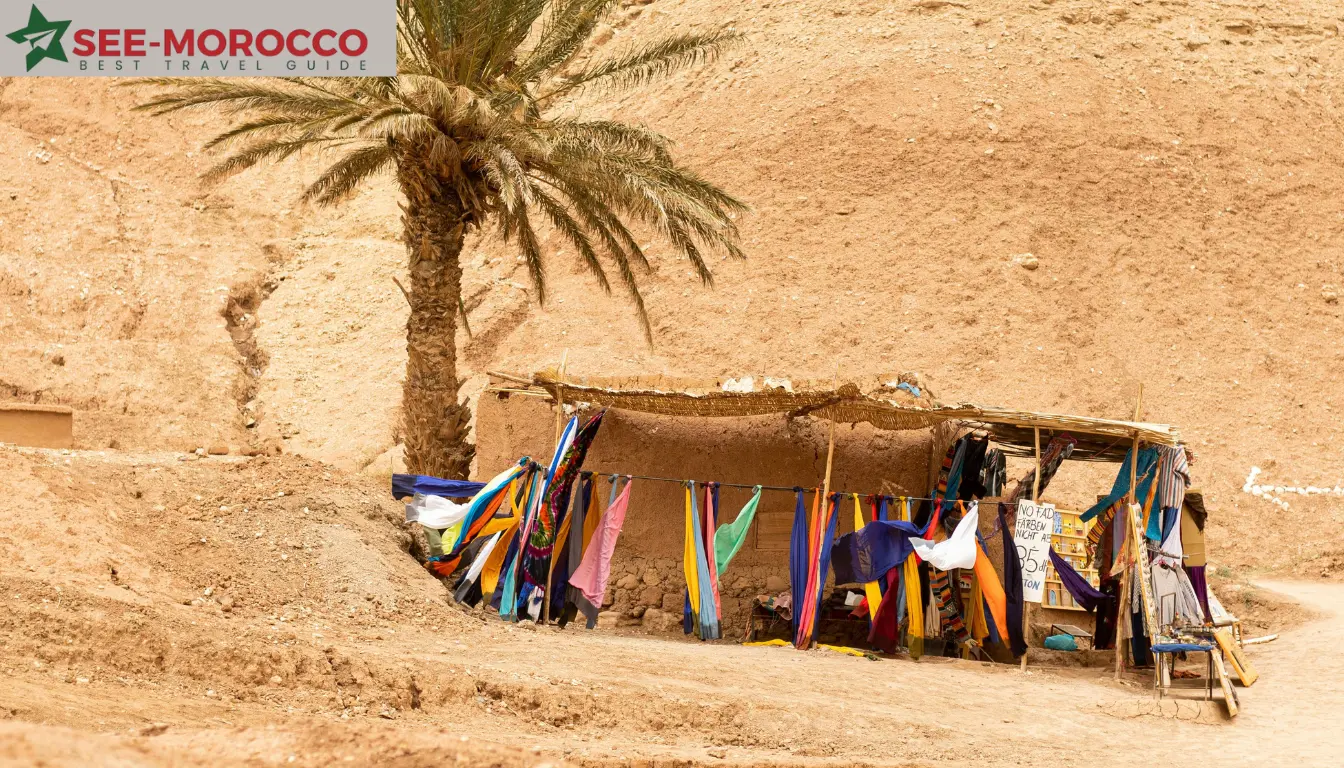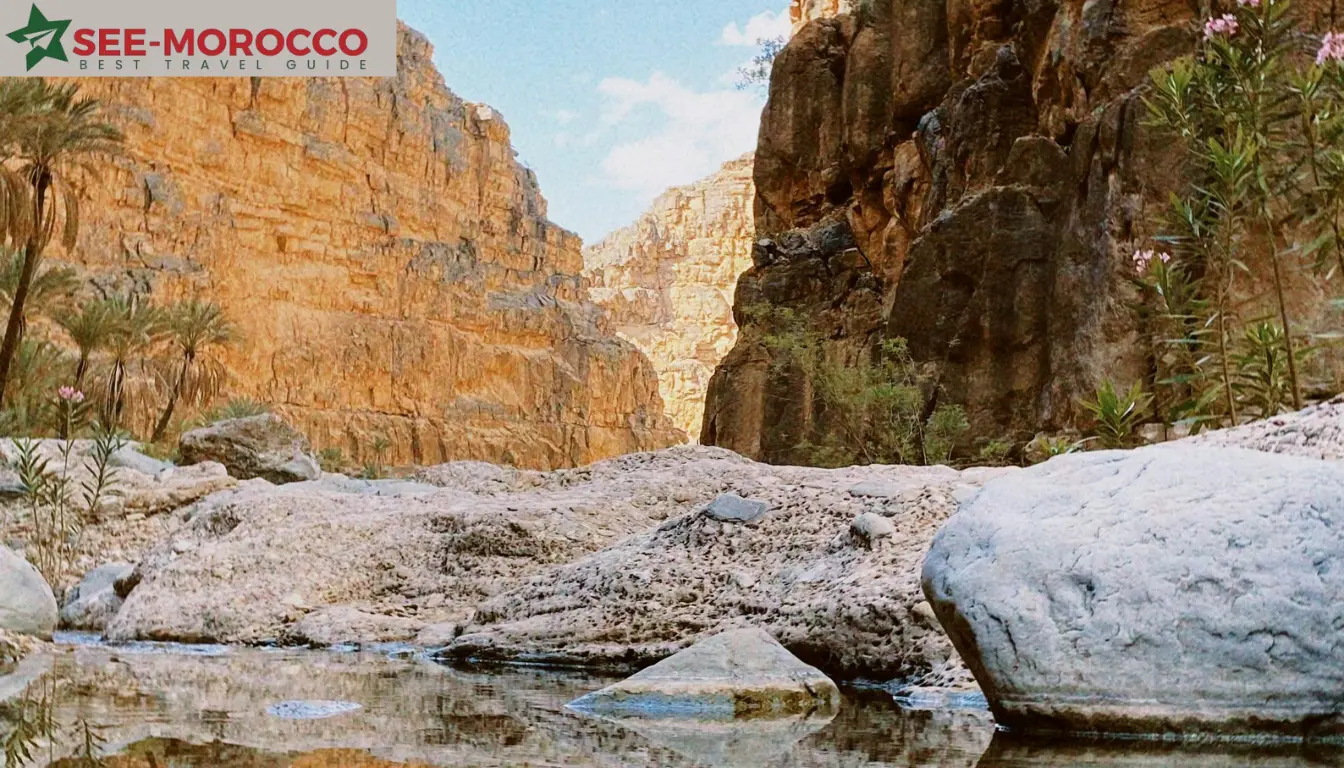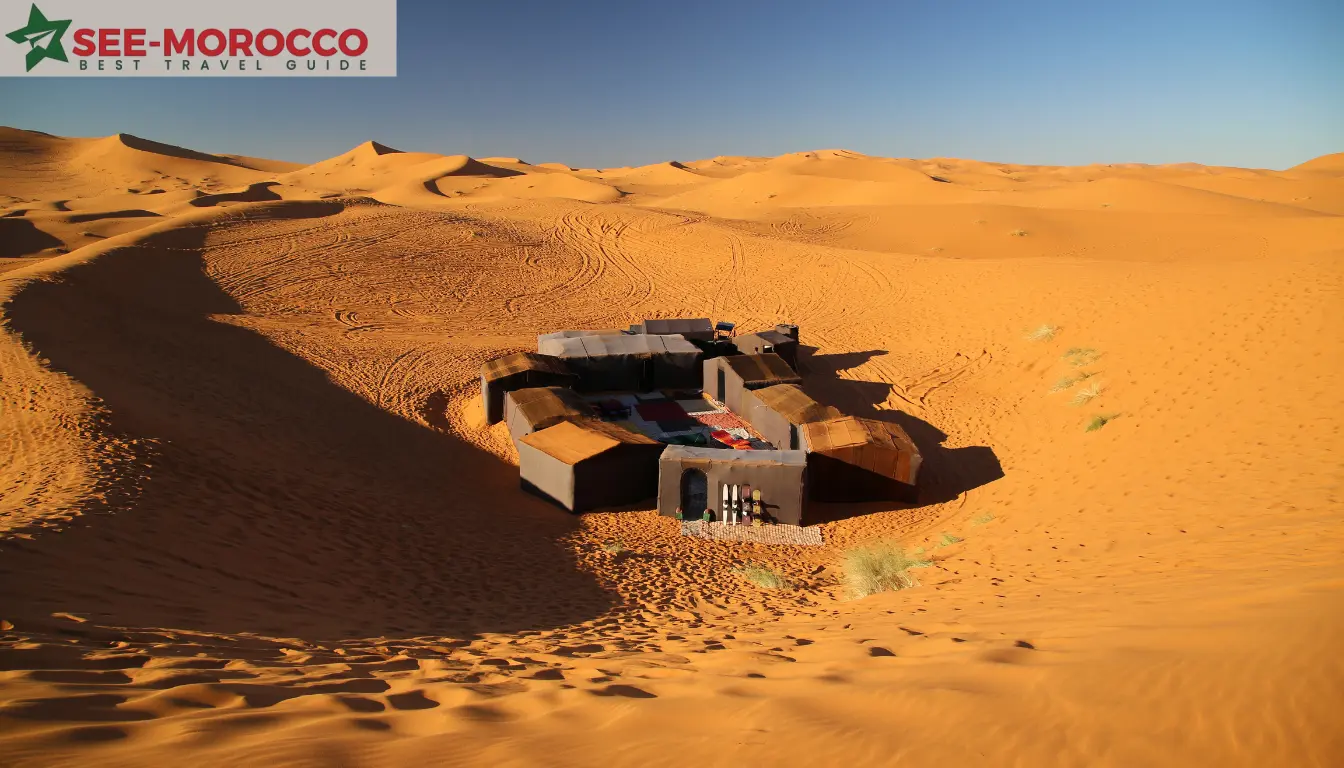The ancient Berber culture, also known as the Amazigh civilization, has a rich history. It goes back thousands of years. This group has greatly influenced North Africa’s culture, politics, and art.
They were known for their nomadic ways and have left a lasting impact on the world.
- The Amazigh civilization is one of the oldest indigenous groups in North Africa, with a history dating back thousands of years.
- The Berbers had a strong Carthaginian heritage and were known for their nomadic traditions, which shaped their cultural and social practices.
- The Saharan tribes were highly resilient and played a crucial role in preserving the Berber identity and traditions.
- Berber kingdoms, such as the Almohad and Almoravid dynasties, left a lasting legacy, including the development of Tamazight languages and rock carvings.
- The Berber culture is reflected in the distinctive Kasbah architecture and continues to influence cultural influences across North Africa.
Unveiling the Amazigh Civilization
The Amazigh, or Berber, people are among the oldest in North Africa. They have roots from prehistoric times. They first lived in the Saharan and Atlas Mountains, then spread across the Maghreb, from Morocco to Libya.
Their heritage and connection with the Carthaginian civilization have deeply influenced the region’s history and culture.
Origins and Spread Across North Africa .the Ancient Berber Culture.
The Amazigh people started in the Saharan and Atlas Mountains. They developed a life suited to the desert. They then moved across North Africa, creating communities and trade networks.
This movement helped shape the Amazigh identity. It led to different subgroups and dialects across the region.
Carthaginian Heritage and Nomadic Traditions
The Amazigh were key to the Carthaginian civilization’s success in the first millennium BCE. They were skilled traders and warriors. This helped the Carthaginians expand and build their trade networks.
This bond with the Carthaginians has shaped the Amazigh culture. It includes their nomadic lifestyle and ability to adapt to the desert.
The Amazigh’s heritage and lasting impact in North Africa show their resilience and adaptability. They continue to influence the region’s culture.
The Resilient Saharan Tribes
The Amazigh people’s culture is deeply tied to their nomadic life and adapting to the Saharan desert. These saharan tribes have developed unique traditions and ways of speaking. They have also built social structures to survive in the tough desert for centuries.
Their skills in weaving and navigating are key to the region’s culture and economy. The Saharan Amazigh tribes keep a strong bond with the land and its resources. This shows their creativity and strength.
| Saharan Tribe | Unique Tradition | Significance |
|---|---|---|
| Tuareg | Indigo-dyed textiles | Renowned for their vibrant, intricate weavings that have become iconic symbols of Saharan culture. |
| Kel Tamashek | Camel herding and trading | Played a crucial role in the Trans-Saharan trade routes, connecting North Africa with Sub-Saharan regions. |
| Kel Antessar | Refined metalworking | Produced highly sought-after silver and copper jewelry and decorative items. |
These saharan tribes have adapted to the desert’s challenges and made a lasting impact on North Africa’s culture and economy. Their resilience and creativity inspire people all over the world.
Berber Kingdoms and Their Legacy
The Amazigh people have a long history of building strong kingdoms and empires. These include the Numidia, Mauretania, and Kush kingdoms. They were powerful in North Africa. The berber kingdoms left a lasting impact on the culture of the Saharan and Maghreb regions.
The Amazigh also have a strong tradition of languages, known as tamazight languages. These languages are spoken across North Africa. They are important to the Amazigh identity and have been for centuries.
Rock Carvings and Ancient Beliefs
The Amazigh people are known for their beautiful rock carvings and cave art. These artworks show their old beliefs and culture. They depict everyday life, religious rituals, and symbols.
| Berber Kingdom | Timeline | Significant Features |
|---|---|---|
| Numidia | 202 BC – 46 BC | Powerful North African kingdom that played a key role in the Punic Wars |
| Mauretania | 110 BC – 40 AD | Influential kingdom that controlled parts of modern-day Morocco and Algeria |
| Kush | 2500 BC – 350 AD | Ancient Nubian kingdom that shared cultural and linguistic ties with the Berbers |
“The Amazigh cultural heritage, embodied in their languages, traditions, and artistic expressions, continues to thrive and inspire people around the world.”
The Ancient Berber Culture: A Rich Tapestry
The ancient Berber culture, also known as the Amazigh civilization, is full of diverse traditions and art. It has left a lasting impact on North Africa. The kasbah, a unique fortified settlement, is a prime example of this influence.
Kasbah Architecture and Cultural Influences
The kasbah shows the Berbers’ cleverness and ability to adapt. These structures were not just for defense but also centers of culture and trade. The Berber culture has shaped the art, music, and food of the area, enriching North Africa’s cultural scene.
The Berbers’ nomadic lifestyle and Carthaginian roots have mixed to create a rich culture. From the kasbah’s detailed designs to the lively Berber music, their culture still fascinates and motivates people today.
“The Berber culture is a mosaic of ancient traditions and modern resilience, woven together to create a truly unique and captivating way of life.”
Exploring the ancient Berber culture reveals its deep and complex nature. Its impact is clear in North Africa’s architecture and art, showing the lasting influence of this civilization.
Preserving the Amazigh Identity
For centuries, the Amazigh people have kept their unique identity and traditions alive. In North Africa, efforts to bring back the Tamazight languages and celebrate Amazigh festivals are key. These actions help protect this ancient and remarkable culture.
The Amazigh identity is tied to their rich languages. Tamazight, the term for the Berber languages, has supported Amazigh culture for thousands of years. Teaching and preserving these languages is vital for keeping Amazigh traditions alive.
Initiatives like Tamazight schools and adding Tamazight to education systems are crucial. They help ensure the Amazigh culture continues.
- Amazigh festivals, like the Ahwach dance and the Timitar Music Festival, highlight the Berbers’ art and heritage.
- These events help keep the Amazigh identity alive. They also help people understand and appreciate different cultures, connecting the Berber communities with others in North Africa.
Recognizing the Amazigh people as indigenous has been a big step in preserving their identity. Through advocacy, Amazigh groups have gained more rights and protection. This ensures the Berber culture stays a key part of North Africa’s heritage.
Conclusion the Ancient Berber Culture
The ancient Berber culture, or Amazigh civilization, shows the lasting strength and deep heritage of North Africa’s indigenous people. They have a long history of nomadic life and ties to Carthage. Their kingdoms thrived and left behind unique architectural styles.
Exploring the ancient Berbers helps us understand North Africa’s diverse and complex identity. The Amazigh legacy reminds us of the need to keep their cultural and language traditions alive. These traditions have shaped this vibrant part of the world.
We can keep the ancient Berber culture alive through research, education, and preserving their culture. By supporting the Amazigh people and their traditions, we celebrate human civilization’s rich diversity. We also honor the human spirit’s resilience.
FAQ for the ancient Berber culture
What is the ancient Berber culture, also known as the Amazigh civilization?
The ancient Berber culture, known as the Amazigh civilization, is a rich and fascinating group from North Africa. They have a history that goes back thousands of years. They’ve greatly influenced the region’s culture, politics, and art.
Where did the Amazigh people originally settle and how did they spread across North Africa?
The Amazigh people are one of the oldest groups in North Africa. They first settled in the Saharan and Atlas Mountains. Over time, they spread from modern-day Morocco to Libya.
What was the relationship between the Amazigh people and the Carthaginian civilization?
The Amazigh people had a close relationship with the Carthaginian civilization. They were crucial to the empire’s growth and trade. Their nomadic ways and adaptation to the desert helped the empire succeed.
How have the Amazigh people’s nomadic traditions and adaptation to the Saharan landscape shaped their cultural identity?
The Amazigh people’s nomadic life and adaptation to the desert have shaped their culture. They’ve developed unique traditions and skills to survive in the desert. This includes weaving and navigation skills.
What are some of the notable Berber kingdoms and their legacy?
The Amazigh people have built many kingdoms and empires that have made a big impact. These include Numidia, Mauretania, and Kush kingdoms. They were known for their power and developed a rich language and art.
How has the ancient Berber culture influenced the architecture and cultural heritage of North Africa?
The ancient Berber culture has left a big mark on North Africa’s architecture and heritage. The kasbah, a type of fortified settlement, is a symbol of their influence. Their culture has also shaped the region’s art, music, and food.
How are efforts to preserve the Amazigh identity and traditions being carried out?
Despite facing challenges, the Amazigh people have worked hard to keep their identity and traditions alive. They’re fighting to revive their languages and celebrate their culture. This ensures the Amazigh civilization continues to thrive. the Ancient Berber Culture the Ancient Berber Culture the Ancient Berber Culture the Ancient Berber Culture the Ancient Berber Culture the Ancient Berber Culture the ancient Berber culture,
